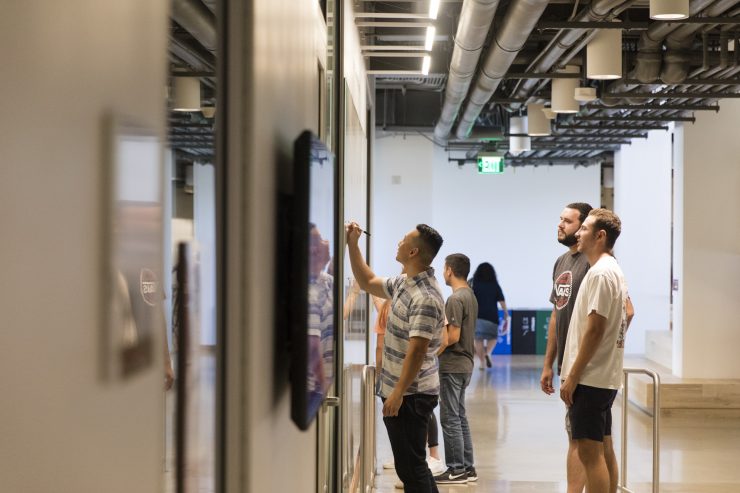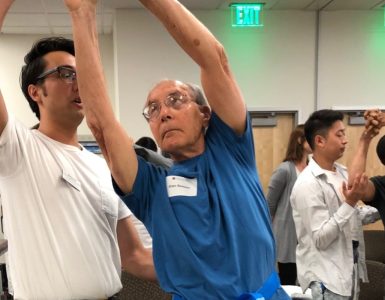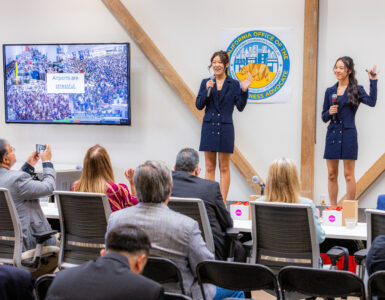What happens when two biologists network at a conference and lament the difficulty in finding appropriate tools and techniques for instructors of science, technology, engineering, and math to teach their students to read and analyze papers in their fields?
Chapman University Assistant Professor of biological sciences Jeremy Hsu and his colleague Lara Goudsouzian, an associate professor at DeSales University, were inspired and accepted the challenge to develop a guide for teaching STEM students to think scientifically.
The findings from their systematic search of nearly 100 published approaches for teaching students how to read scientific literature across STEM disciplines is published in CBE-Life Sciences Education.
The IMD World Competitiveness Center reports that the United States ranked 10th in its 2020 Competitiveness Report after ranking first in 2018, and U.S. students’ math and science scores have remained stagnant for decades while students in other countries have shown improvement.
“Reading primary scientific literature is so critical, and there is no one-size-fits-all approach for teaching this skill,” said Hsu, who met his colleague as members of a professional network sponsored by the National Science Foundation for promoting active learning and evidence-based pedagogies in the STEM classroom. “We hope that our paper provides a useful and practicable framework for STEM instructors on teaching students how to read scientific literature.”
Here are five steps for instructors who want to inspire their students to think scientifically:
- Build critical scaffolding of instruction and of primary literature. Don’t hand a dense, complex paper to a student and expect them to read and understand it as you would without support, guidance, even reassurance along the way.
- Offer advice and instructions guiding students through the paper.
- Utilize resources from your campus as well as the STEM education community. The paper identifies published approaches for teaching students how to read papers in a diversity of STEM disciplines, and provides an easy way to locate relevant approaches quickly.
- Reach out to your institution’s librarians who can help navigate scientific literature databases and search for publications.
- Assess student learning, reflecting on the approach used, and refine teaching in future iterations of the course. The study identified that many of the published approaches did not have extensive assessment data, and instructors who gather such information can not only improve their own teaching and student learning, but also help the STEM education community learn more about how students read primary literature.
The article suggests instructors think about their main objective for having students read scientific literature and select approaches accordingly, considering class level, disciplinary context, and class size. The article then offers instructors evidence-based recommendations on how to implement each approach in their own classes, with advice for choosing papers and guiding students through reading the papers. Hsu and Goudsouzian also explore how students develop skills for reading scientific papers and highlight the importance of assessing student learning in these areas, providing suggestions for instructors on how to measure learning gains and identify areas where students may need additional support.
“It can be challenging for college instructors to identify resources or know how to navigate the STEM education literature,” Hsu said. “Our hope is that our work summarizes this information and simplifies this process for instructors who wish to include the reading of primary literature in their STEM courses.”
About Chapman University
Founded in 1861, Chapman University is a nationally ranked private university located in Southern California. Chapman is categorized by the Carnegie Classification as an R2 “high research activity” institution and offers personalized education to more than 10,000 undergraduate and graduate students. The campus has produced a Rhodes Scholar, been named a top producer of Fulbright Scholars, and hosts a chapter of Phi Beta Kappa, the nation’s oldest and most prestigious honor society. Based in the city of Orange, Chapman also includes the Harry and Diane Rinker Health Science Campus in Irvine. In 2019, the university opened its 11th college, Fowler School of Engineering, in its newest facility, Keck Center for Science and Engineering. Learn more about Chapman University: www.chapman.edu.
Media Contacts:
Cerise Valenzuela Metzger, Director of Public Relations | cmetzger@chapman.edu | 714-289-3143
Carly Murphy, Public Relations Coordinator | carmurphy@chapman.edu | Desk: 714-289-3196 | Mobile: 714-497-9683




